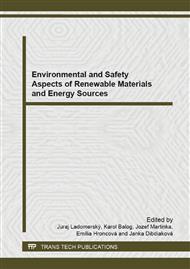p.118
p.126
p.131
p.141
p.149
p.155
p.162
p.171
p.177
Exploring the Impact on Radio Frequency Signal of RFID Technology Related to Physical Protection of Renewable Resources
Abstract:
Radio Frequency Identification (referred to as RFID) is an effective and contactless feature of identification and localization of the object of interest with specific system structure that includes defining the principle of operation of the primary components, which are the transponder and the reader. The range of applicability of RFID system is diverse, but its optimum usability is given primarily by the choice of appropriate frequency which will ensure the functionality of the whole system in terms of physical protection. The article therefore deals with the operation of RFID technology in various wavelengths of frequency band and influence of radio frequency signal with a focus on the action radius of physical protection of renewable resources (e.g. research centers, universities, power plant using energy from renewable resources) as a technical means destined for increasing the level of security and protection of persons, property or other assets.
Info:
Periodical:
Pages:
149-154
Citation:
Online since:
August 2014
Authors:
Keywords:
Price:
Сopyright:
© 2014 Trans Tech Publications Ltd. All Rights Reserved
Share:
Citation:


